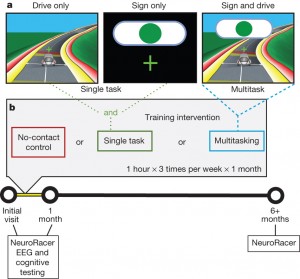 Every academic in game-based learning should read Todd Oppenheimer’s book “The Flickering Mind: Saving Education from the False Promise of Technology.” The book is long, dense, depressing, nearly ten years out of date, and everyone should read it. Oppenheimer’s book surveys the wreckage of the 1990s “e-learning” fad that cost the nation approximately $70 billion dollars. Poor planning, a lack of data, blind optimism, and a healthy amount of profiteering created a system that was guaranteed to fail even though technological efforts in other industries were succeeding. We should read this book because we, as educators, believe in failing forward. In order to provide a better technological landscape for the students of the future, we need to learn from our collective past. The good news is that some of the major obstacles that capsized the e-learning movement of the 1990s have been solved. For example, the cost of rolling out software to thousands of computers is no longer necessary now that the Internet can be accessed by over 95% of undergraduate students (Smith et al., 2011). However, other problems have yet to be solved. There remains a paucity of data on the efficacy of educational games and a lack of peer review for games that even receive federal funding.
Every academic in game-based learning should read Todd Oppenheimer’s book “The Flickering Mind: Saving Education from the False Promise of Technology.” The book is long, dense, depressing, nearly ten years out of date, and everyone should read it. Oppenheimer’s book surveys the wreckage of the 1990s “e-learning” fad that cost the nation approximately $70 billion dollars. Poor planning, a lack of data, blind optimism, and a healthy amount of profiteering created a system that was guaranteed to fail even though technological efforts in other industries were succeeding. We should read this book because we, as educators, believe in failing forward. In order to provide a better technological landscape for the students of the future, we need to learn from our collective past. The good news is that some of the major obstacles that capsized the e-learning movement of the 1990s have been solved. For example, the cost of rolling out software to thousands of computers is no longer necessary now that the Internet can be accessed by over 95% of undergraduate students (Smith et al., 2011). However, other problems have yet to be solved. There remains a paucity of data on the efficacy of educational games and a lack of peer review for games that even receive federal funding.
By imposing a scientific standard of data collection and peer review, the games-based learning movement might avoid repeating the Ed Tech bubble of the 1990s.
By imposing a scientific standard of data collection and peer review, the games-based learning movement might avoid repeating the Ed Tech bubble of the 1990s. A great deal of effort, particularly in the private sector, is spent on creating apps, but very little effort is spent on assessing the efficacy of those products. When a private company makes claims about an app, it is very unlikely that assessment was conducted under the rigor of peer review. By comparison, when a psychological assessment is created, the assessment undergoes years of review before becoming available for use. The reliability and the validity of the assessment are quantified before a test can be considered beneficial. It would be nice to see the games-based learning community adopt this kind of rigor when producing games for learners. Fortunately, some NGOs and government entities are starting to address the problem. The New York Times published an article that calls attention to the paucity of data for mobile apps that claim to improve math skills in children. However, it is really the responsibility of the game developers to be honest and not make claims that can’t be backed by data.
Smith, A., Rainie, L., and Zickuhr, K. (2011). “College students and technology.” Pew Internet. Retrieved from: http://www.pewinternet.org/Reports/2011/College-students-and-technology.aspx
 A recent study by Joaquin Anguera and the Gazzaley lab at UCSF reported that older adults who receive training on a customized driving simulator demonstrate improvements on tasks that demand divided attention. Performance benefits achieved by the simulator last for 6 months, and the resulting performance of the experimental group exceeded that of a 20-year-old control group that received no training. Electrophysiological measurements in this group also provided evidence for relief from the decline of brain wave activity associated with a decline of cognitive control in advanced age.
A recent study by Joaquin Anguera and the Gazzaley lab at UCSF reported that older adults who receive training on a customized driving simulator demonstrate improvements on tasks that demand divided attention. Performance benefits achieved by the simulator last for 6 months, and the resulting performance of the experimental group exceeded that of a 20-year-old control group that received no training. Electrophysiological measurements in this group also provided evidence for relief from the decline of brain wave activity associated with a decline of cognitive control in advanced age.





You must be logged in to post a comment.